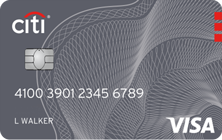CardsFTW #76: Costco Limits Payment Options
Plus, a new eco-conscious card and more
Costco Narrows Payment Options
Costco is quite famous for accepting only a single card network for credit in its physical warehouse locations. Initially, Costco accepted American Express because of its co-brand card product deal. In 2016, Costco shifted its co-brand business to Citibank and the Visa network. With this change, Costco only accepts Visa cards in-store. Online, however, Costco continued to take multiple forms of payment.

This week, Costco announced that it would no longer accept the Discover Network on its ecommerce platform, narrowing acceptable cards to Visa and Mastercard. It was always intriguing that Costco allowed anything outside of Visa online. Discover made some efforts to win volume here: the rotating 5% cash back categories on the flagship Discover it card often included Costco and warehouse stores.
That bonus will no longer be an option. I can only speculate, but Costco demanded a lower merchant discount rate to accept Discover cards. Discover balked, and that was the end of the deal.
Costco probably won’t see a volume decrease here: Discover captures approximately 3.9% of U.S. Credit volume, according to the Nilson Report (First Quarter Card Network Results, Nilson Issue 1242, May 2023). During my time at Wallaby in the mid-2010s, we investigated Discover cardholders and determined most had a second card. I’d guess this is still the case today. Visa, on the other hand, is the number one network.
All that said, I am not a fan of merchants who limit payment choices. It doesn’t make sense to me: why put a roadblock before completing a transaction? Costco is a special case, given its size and member loyalty. Discover runs a solid network, and the Discover it card is a good offering for many consumers. All-in-all, it’s an unfortunate change.
Card Losses Rising
Goldman Sachs (no relation) reported that “Credit card losses are rising at the fastest pace since the Great Recession” in 2008. Credit losses are at 3.63%, increasing 1.5 percentage points (a 70% increase) from the bottom in September 2021. Further, Goldman sees them rising another 1.3 percentage points to 4.93%. Americans owe more than $1 trillion on credit cards, a record high, according to the Federal Reserve Bank of New York.
While these reports draw big headlines, credit cards are inherently cyclical, and the largest card issuers are very good at managing credit risk, leading to reduced credit availability and higher interest rate charges. We will see increasing reserves at issuers and a decline in new folks entering the space. However, I am sure the banks will generate plenty of profit.
Thank you for reading CardsFTW. This post is public so feel free to share it.
Veem’s New Virtual Cards
Veem is a late-stage payment service provider that has raised more than $100M in venture funding. The company’s products help businesses to make cross-border payments and reports to serve more than 100 countries with a total lifetime-to-date processing volume of more than $10 billion.

Last week, Veem announced a new Visa Virtual Card, issued by Pathward Bank and powered by Marqeta. As highlighted in the release, cards remain an ideal way to enable real-time payments. While networks like FedNOW and other real-time payment options get up to speed, cash-outs on cards work well. By adding a card to its capabilities, Veem enables businesses to use transferred funds more quickly and easily.
Credit One’s E3 Platinum Visa
Credit One bank, which offers a variety of cards across the subprime and prime spectrum, announced its new E3 Platinum Visa. Credit One is an unique company (and don’t confuse it with Capital One). They offer many of their cards all the way down to subprime and vary the annual fee, not just the APR, to compensate for the added risk.

The new card features 3% cashback on categories aimed at younger consumers, like streaming services, entertainment, and rideshare, with 1% everywhere else. In addition, the card is made of partially recycled plastic (a common theme to announce these past few weeks), and a donation to plant a tree each year on your card anniversary.
Planting a tree can cost a corporation anywhere from $0.10 to $1.00. The positioning of E3 as eco-friendly (is that what the “E” stands for?) looks like greenwashing to me. As noted in CardsFTW #73, I favor more environmentally friendly plastic cards, but I don’t think this card achieves strong environmental goals. Leave a comment if you know of any eco-friendly cards I should check out.
Folks have been attempting to build cards and banking products around environmental causes for years, including prominent startups like Aspiration, down to small cards that barely launch (such as Commerce Bank’s Sustain:Green card from 2015). The challenge here is that people don’t want to give up their rewards! You could donate your entire cashback to environmental causes, but people instead want to take free flights, which are typically anything but climate-friendly.
Me, Elsewhere
Diving deep into the intricacies of Know Your Customer (KYC) in the fintech world, I recently authored an article for This Week in Fintech titled “What you need to know about Know Your Customer.” From my early days at Green Dot to my time as President of Apto Payments, I’ve seen the evolution and challenges of KYC firsthand.
CardsFTW
Thanks for reading CardsFTW, a weekly debit and credit newsletter by Matthew Goldman. Matthew is the founder of Totavi, LLC, which provides GSD Product Consulting with real operational value. Visit totavi.com to learn more and engage us.
* Indicates a company with whom Matthew Goldman or Totavi, LLC has a financial relationship.
